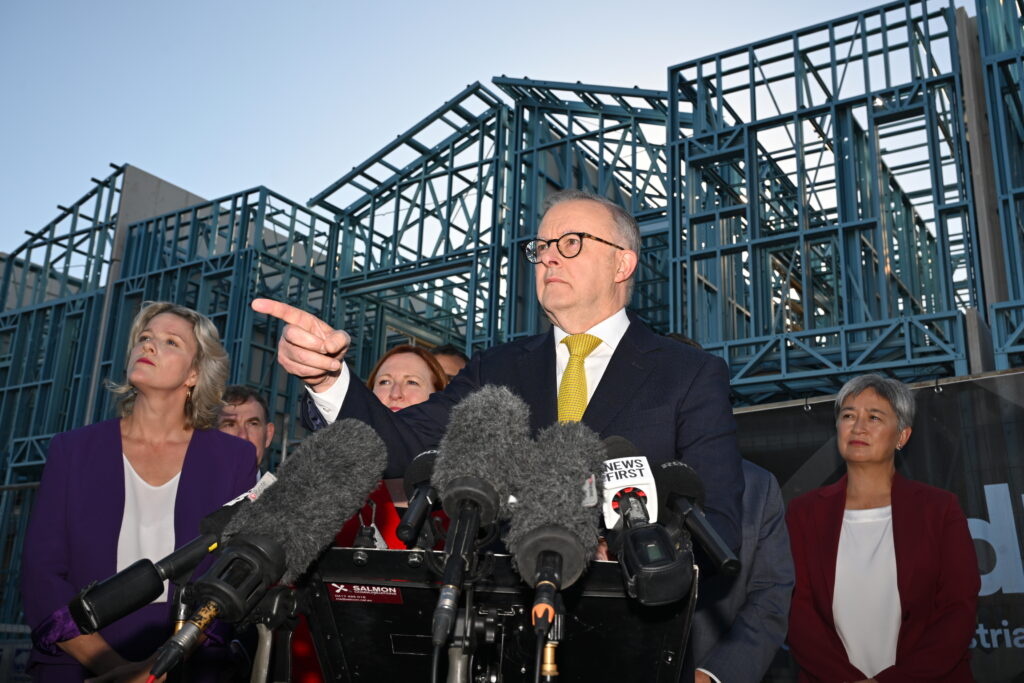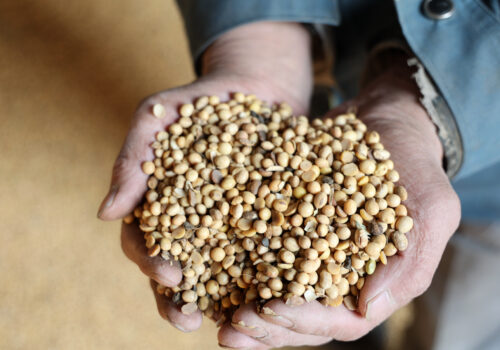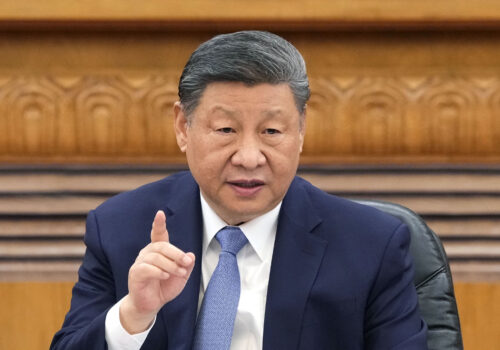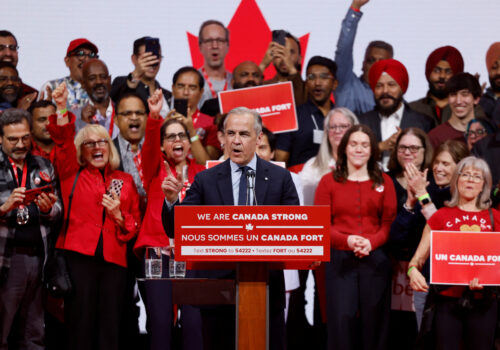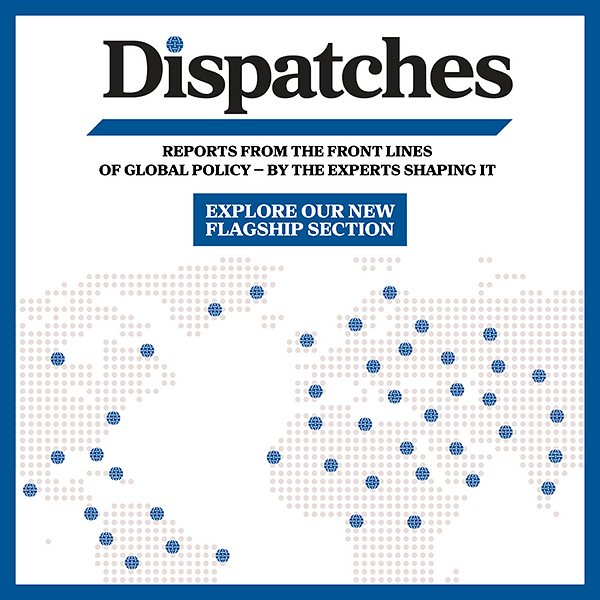ADELAIDE, Australia—“Running up the score.” This is a phrase I heard reverberate through the Australian media over the past month.
Perhaps surprisingly, “running up the score” did not originate from any of the candidates in the run-up to Australia’s May 3 election, which saw Prime Minister Anthony Albanese and his Labor Party score a comfortable victory. Instead, the phrase was a retort on April 8 by US Trade Representative Jamieson Greer, who is tasked with overseeing the implementation of the new global tariff regime.
Asked by US Senator Mark Warner why the Trump administration’s tariffs apply to US ally Australia, despite a free trade agreement and a trade deficit, Greer said that the United States “should be running up the score on Australia.” The phrase embodies everything that many Australians now perceive as the new reality of the alliance with the United States: that it is no longer about “mateship,” shared sacrifice, and mutual fondness. Instead, the United States now sees Australia as simply another lackey to squeeze.
It is not the first time the relationship has been seen this way. Leave aside the romanticized image of US and Australian soldiers fighting alongside each other in every conflict since the 1916 Battle of Le Hamel. The reality is that the US-Australia relationship was predominately transactional until the 1950s, as is illustrated by the United States offering the creation of the Australia-New Zealand-United States security alliance, or ANZUS, in part to secure Australia’s military support for the Korean War.
Today, the US-Australia alliance is deep and multi-faceted. In fact, it is one of the most integrated US alliances in the world. The AUKUS partnership (also including the United Kingdom) and the Five Eyes intelligence alliance (also including Canada, New Zealand, and the United Kingdom) might be the most well-known. But there is a deep network of interdependencies that make this relationship vital to the national security of both countries.
But that doesn’t mean the United States is irreplaceable for Australia. Britain remained Australia’s security guarantor after federation in 1901, with Australia sending vast military support to British wars throughout the first half of the twentieth century. Not only were all facets of the Australian military built on the foundations of British doctrine, culture, and equipment. The two countries were also more economically, politically (still sharing a head of state), and culturally integrated than the United States is with Australia today.
Despite this, when Britain was unable to continue to support Australian security interests after the fall of Singapore in World War II, Australia made the pragmatic decision to pivot to the United States as its security partner of first choice.
If Australia were to pivot again today, then where might it turn?
I can tell you where Australians will not turn: China. The idea that China could realistically displace the United States as Australia’s primary security partner is delusional. It would take decades and billions—perhaps trillions—of dollars to transition Australia’s military equipment, doctrine, laws, and institutions for this to work. And it would still lack the shared history, language, and culture required to build the trust needed for a relationship approaching that of the one between Australia and the United States.
While there will always be segments of the population wanting Australia to pivot to China, no serious security analyst believes it is possible or beneficial. If they do, then perhaps their affiliations and financial arrangements should be examined.
However, there is a plethora of secondary military relationships Australia shares with like-minded nations that Canberra could elevate. Australia and Britain remain close, and in a post-Brexit world there may be mutual benefits to renewing increased engagement. Canada and Australia share many military and societal similarities. They are economically, geographically, and demographically comparable in size and nature. Australians and Canadians also share many cultural, political, and military values and systems, and there is already scope for increased cooperation. There has long been talk of an Australia-European Union Free Trade Agreement, and Australia worked hand in hand with NATO forces in Afghanistan. Not to mention that Australia already purchases a significant amount of military equipment from European countries, including many of Australia’s modern naval surface combatants. Moreover, Australia’s relationships and cooperation with Japan, South Korea, and Singapore grow apace, and there are even burgeoning links with Middle Eastern nations, such as the United Arab Emirates.
While Australia values the “interoperability” of utilizing US equipment, like many nations it has sourced equipment elsewhere due to cost, availability, and logistics considerations. None of these relationships alone could replace the role the United States plays, but a constellation of like-minded countries just might.
If US policies continue in the spirit of “running up the score” on allies, then they risk not just eroding US leadership, respect, and standing abroad. They potentially also weaken US relevancy—not in every aspect, but in important ones. Will tariffs erode the foundations of Australia’s alliance with the United States? No. At least not in isolation. But it is a piece of a puzzle that will raise questions in Australians’ minds—including in Albanese’s government—about who to focus their limited resources for cooperation with and who to rely on to source military equipment from.
John T. Watts is a nonresident senior fellow in the Forward Defense practice of the Atlantic Council’s Scowcroft Center for Strategy and Security.
Further reading
Fri, Apr 11, 2025
Want to understand the US-China trade war? Start with soybeans and batteries.
New Atlanticist By
As Washington and Beijing hit each other with new tariffs, two goods—soybeans and lithium-ion storage batteries—offer a window into the larger trade war.
Thu, Apr 10, 2025
China is ready to ‘eat bitterness’ in the trade war. What about the US?
New Atlanticist By Dexter Tiff Roberts
As the US imposes a 145 percent tariff on Chinese imports, officials in Beijing are turning to a belief that Chinese people will endure hardships in service of a national goal.
Tue, Apr 29, 2025
Experts react: What the Liberal Party’s win in Canada means for the world
New Atlanticist By
Canadian Prime Minister Mark Carney’s party secured the most seats in Canada’s parliament in elections on April 28, marking a remarkable political turnaround.
Image: Australian Prime Minister Anthony Albanese speaks to the media during a visit to Prospect Corner housing development together with Premier of South Australia Peter Malinauskas and Australian Housing Minister Clare O’Neil on Day 16 of the 2025 federal election campaign, Adelaide, Monday, April 14, 2025. (AAP Image/Lukas Coch) via Reuters
